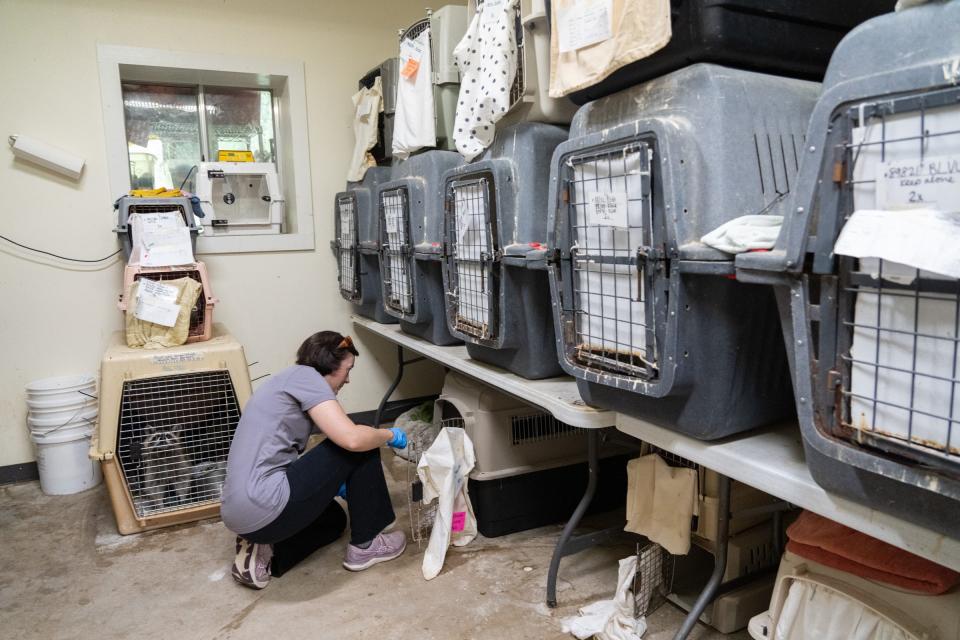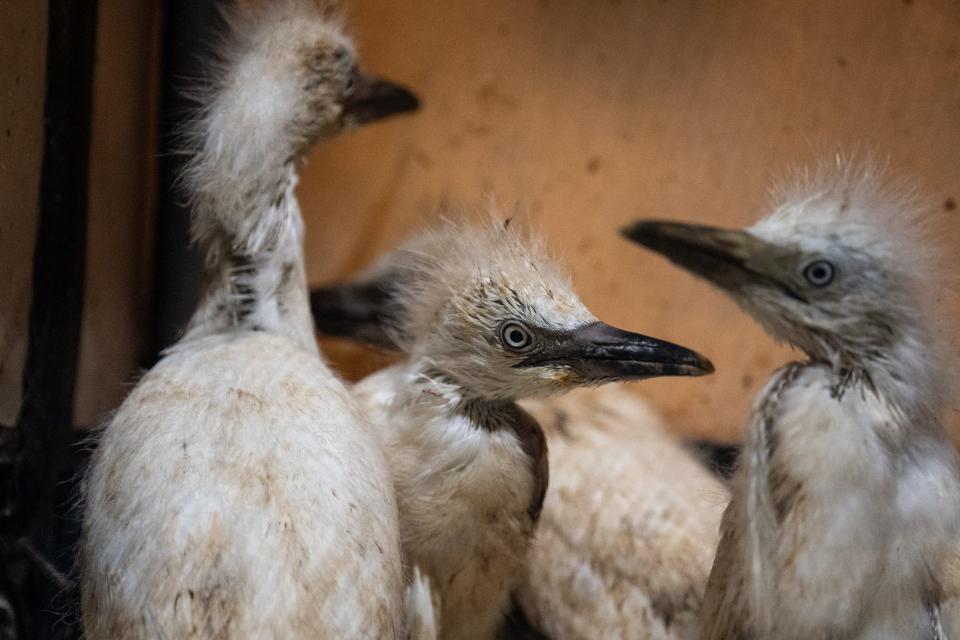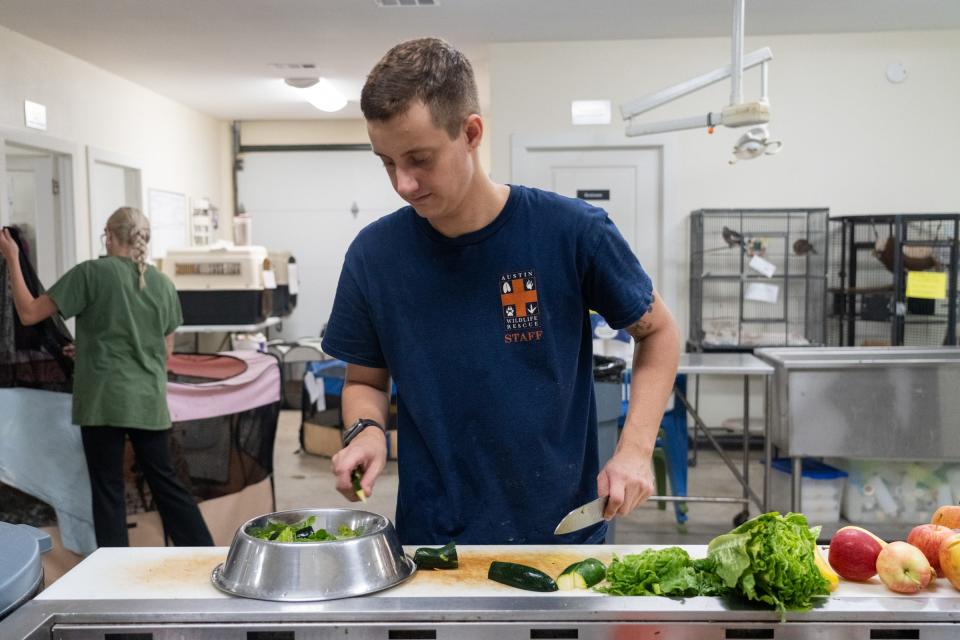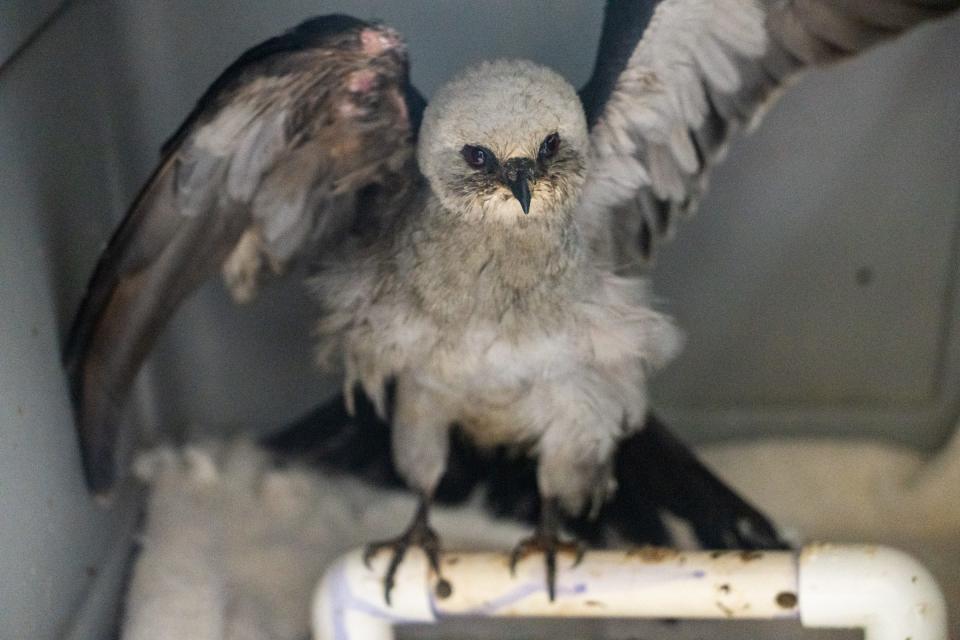Austin Wildlife Rescue taking in 76 baby birds orphaned, injured by Hurricane Beryl
In the wake of Hurricane Beryl, Austin Wildlife Rescue has opened its doors to 76 orphaned and injured baby birds. If all goes well in their recovery, the birds will be released in August and September.
After the storm, Houston and Angleton wildlife organizations were inundated with thousands of animals. They were forced to send some of their animals to surrounding wildlife centers. Austin Wildlife Rescue took in 30 Mississippi kites and 30 cattle egrets last week. As of Monday night, 16 yellow-crowned night herons are also calling the rehab center home, said Jules Moran, executive director of Austin Wildlife Rescue.
Julie Kuenstle, Houston SPCA vice president of communications, said the hurricane was devastating for wildlife in the area. In one neighborhood in particular, there were hundreds of egret nests destroyed by the wind, knocking the baby egrets out of the trees.
"They were, unfortunately, a lot of deceased birds that had fallen from the nest, and they had either died from the impact below on concrete or they drowned because of the of the water," Kuenstle said.
The SPCA retrieved 353 egrets, but Kuenstle estimated hundreds died. As the team collected birds to bring back to the rescue center, they were surrounded by broken eggs, waterlogged babies and birds run over by cars. The rescue staff picked up each bird to make sure they were not leaving any behind.
"I just cannot imagine how frightening that must be (for the birds) to be in a nest and then experience a very frightening storm, and now to be surrounded by dead bodies, literally, of their nesting community,” Moran said.
Though they are wild animals, they are not "immune to experiencing death around them," Moran said. When the birds were first brought into the Austin wildlife center, she could see the terror in their eyes.

“It's just so important to remove them from that situation quickly and get them warmed up.” Moran said. “They've experienced a physical and, I'm sure on some level, an emotional, traumatic event in their lives."
To help them adjust to their new life, the wildlife center staff groups each bird with "mini flocks" that they'll stay with even after being released.
Influx of birds puts a strain on wildlife center
Moran said receiving so many animals in one day is typical in a natural disaster, but the influx outpaces the number of birds from each species they are accustomed to caring for.
Usually, Austin Wildlife Rescue will see around 10 Mississippi kites (a small bird of prey), 10 egrets and 20 yellow-crowned night herons trickle in over the course of the year, according to Moran. Because the center is taking in more birds at once than it typically does in a year, Moran said it is having to set up “triage-type crates” and use every available space in the best way possible.

Because the center does not have enough incubators for the volume of baby birds the staff is caring for, Moran said its screened-in porch is being put to use.
“It's nice and hot out on the porch because of the weather, so we're using that natural warmth to help us out spacewise,” Moran said.
Many of the birds the center brought in had their nests and rookery sites destroyed by the constant, strong wind gusts “for over three hours straight,” said Moran. A few of the baby birds Austin Wildlife Rescue accepted were injured.
“I think a lot of people think, ‘Well, you know, wildlife, it's out in the wild, they know what to do,’” Moran said. “But it's a natural disaster; it’s not a natural thing that's constantly happening. So even wildlife gets horribly affected during a natural disaster.”
Bird-itude starting to show
Along with making sure the birds are receiving plenty of food and fluids, the wildlife center staff is showering them with tender care and making an effort to get the birds as relaxed and comfortable as possible. With that accomplished, the birds can feel stable in their new environment and continue to grow.
Now that the birds have gotten accustomed to having a constant food and water source, Moran said she has started to see their personalities show and a little attitude as well.

“They're definitely voicing their displeasure at us, which we love seeing, because that's normal wild behavior,” Moran said. “That tells us they're probably getting a little more comfortable to know that they can express themselves a little more violently towards us. But, yeah, they're definitely looking much better and gobbling food up like you just wouldn't believe.”
As the wildlife rehabilitators have been learning the habits and personalities of their new guests, Moran said, they’ve discovered that despite a typically expansive diet, the yellow-crowned night herons have turned out to be "bougie birds."
“They were looking at me giving some side-eye about the bugs I was offering,” Moran said. “So I picked up some of the crawfish (the Angleton facility sent along with the herons), and they were like, ‘Well, thank you very much. This is what we're going to need to continue to get.’”
The herons who had leg and foot fractures when they arrived in Austin are starting to come around as well. Moran calls one of them the “Cinderella of the bird world” because of his single foot slipper.

Road to recovery and release
As the baby birds continue to grow and strengthen, they will be moved to larger, outdoor aviaries where they can get practice being outside and build up the necessary muscles for migration.
Moran expects the egrets and herons will be ready for release around mid-August. The Mississippi kites will require more precise timing as they typically migrate over Austin in late August and early September.
“We'll be looking now at different bird sighting apps to see where these flocks are so that we can take them to those flocks, and release them in that same area, so they can join those flocks to help with their migration to Argentina,” Moran said. “Since these are baby Mississippi kites, we want to make sure that they are with a flock where there are some older birds that have made the journey and they understand the journey.”
With the sudden increase in tenants, Austin Wildlife Rescue is expecting to expand its budget by at least $40,000.
The center has launched an emergency campaign to help raise funds for the rescue operation. For information on how to donate, visit austinwildliferescue.org.
This article originally appeared on Austin American-Statesman: Austin Wildlife Rescue houses 76 baby birds orphaned, injured by Beryl

